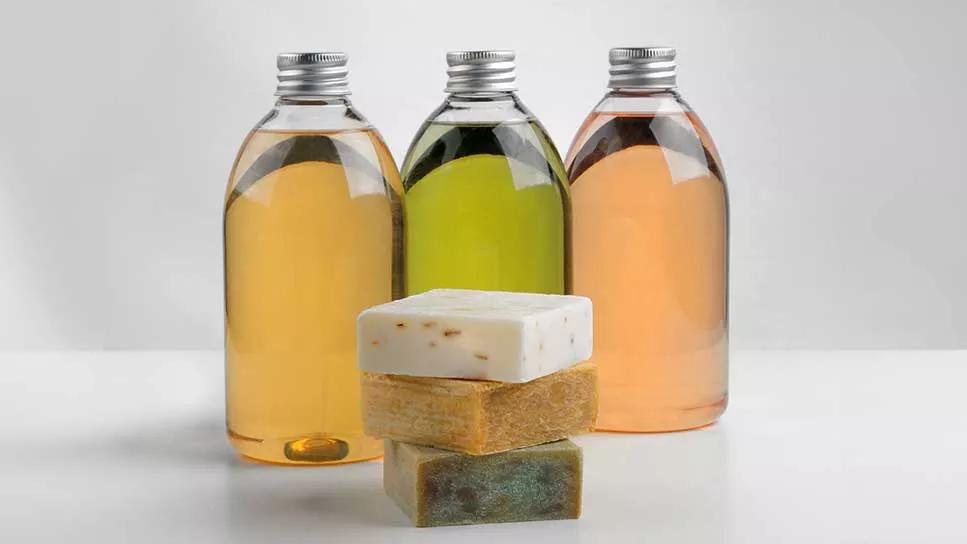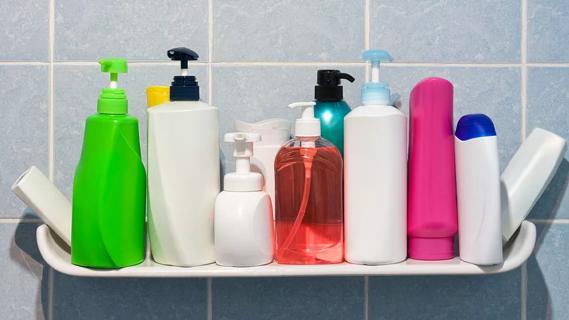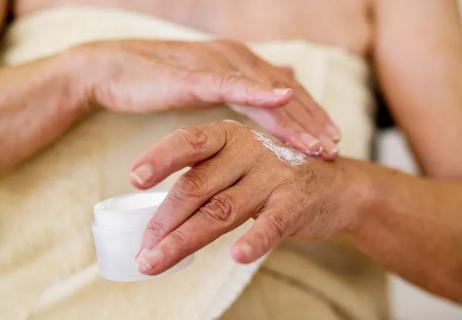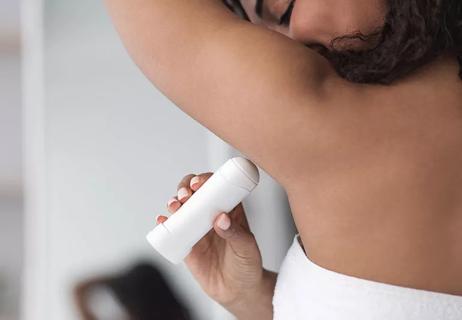This olive oil-based soap is generally mild and safe when diluted

In the age of endless health and beauty regimens, we’re often searching for the next best tool that can make our lives healthier and easier to manage. But with new and improved soaps and cleansers come a whole other level of concern for how our bodies will react to such products and the effect production might have on the environment.
Advertisement
Cleveland Clinic is a non-profit academic medical center. Advertising on our site helps support our mission. We do not endorse non-Cleveland Clinic products or services. Policy
Luckily, castile soap is one product that has long been used for its mild and environmentally conscious properties. Dermatologist Alok Vij, MD, explains what sets castile soap apart from other soap products, along with seven ways you can use it safely.
Many soaps are made with animal-based fats or oils, lye (sodium hydroxide). A lot of soaps also use scents, fragrances and other preservatives — things you don’t want to use in case of unwanted reactions on your skin.
Castile soap is different in that it’s traditionally made with olive oil and other vegetable-based oils. Pure castile soap is natural, nontoxic, biodegradable and made without any synthetic ingredients. Originally made in the Mediterranean before its popularity spread across Europe, it’s a soap that has historically been used in a variety of ways.
“Castile soap is ethically better and environmentally more responsible,” says Dr. Vij. “One of the biggest reasons people are using this more is because it reduces someone’s environmental impact and allows someone to use a product that’s vegan, vegetable-based and cruelty-free.”
Beyond that, its focus on using natural ingredients sparingly makes it a gentler soap that’s safe to use not only around your home, but also on your body.
Advertisement
“It doesn’t have many additives and it generally tends to be pretty gentle,” continues Dr. Vij. “It’s not going to strip away a lot of the natural oils from your skin like some other soap products. Instead, it can allow your skin to accept hydrating products a little bit easier than harsher soaps.”
You can use castile soap for anything you would use normal soap or detergent. But what makes castile soap particularly unique is its history of utilizing olive oil.
“We all hear about the benefits of olive oil in diet, but those same benefits also extend to topical use on the skin. People have used olive oil as a moisturizer for centuries,” notes Dr. Vij. “Using an olive oil-based soap may even be more palatable for people who have irritated or sensitive skin because it’s less harsh and may have some mild anti-inflammatory effect.”
Castile soap tends to be more concentrated than other soaps, so you want to be careful about how much you’re using and you want to dilute it before using it on your skin and other surfaces.
“You want to dilute it by taking a small amount of castile soap in the palm of your hand or on a washcloth and then use water to make a thinner paste and create a little bit of foam,” explains Dr. Vij. “Then, use that on a washcloth or use your hands to gently massage it into your skin.”
Here are several ways you can put castile soap to use:
Castile soap’s limited ingredients make it a good option to use for shampoo. Because of how concentrated and thick it is, you want to use a smaller amount than you would elsewhere on your body.
“It’s more likely to strip color from your hair compared to other shampoos, so if you have color-treated hair, you want to dilute it even more and focus on using it on your scalp rather than all over your hair,” instructs Dr. Vij. “It can also be a little more difficult to get out of your hair, so you want to rinse your hair thoroughly after using it.”
In general, you want to protect the natural oils on your face and keep your skin moisturized. Using natural face oils like jojoba oil can be hydrating, but a lot of face oils use synthetic ingredients that block your pores or irritate acne-prone and sensitive skin. Castile soap doesn’t typically cause those same problems when it’s diluted.
“In general, because it’s relatively short on the ingredient list, it would be potentially beneficial and certainly not worse than a traditional soap or face wash,” says Dr. Vij. “If it’s not diluted enough, it could, in theory, alter your skin’s pH levels. But that would be unlikely because most of the lye base has been used up in the soap-making process.”
Advertisement
What’s safe for your face is typically safe for the rest of your body. And in particular, if you have acne-prone skin, atopic dermatitis, hidradenitis suppurativa, psoriasis or rosacea, castile soap may be an added benefit alongside other first-line forms of treatment prescribed by a healthcare provider.
“It’s unlikely to worsen any condition because it’s relatively mild and it has common ingredients that are tolerated universally,” says Dr. Vij. “It’s unlikely to make a huge improvement for most people, but it could certainly be a helpful tool.”
Using castile soap for cleaning superficial wounds might be a bit of a mixed bag. A lab study from 1999 discovered castile soap was more effective in healing wounds on its own when compared to normal saline solution, benzalkonium chloride, bacitracin and a combination of all of the above.
But research from 2015 suggests normal saline solution was more effective than castile soap when cleaning open fractures. Though more research is needed, castile soap may be a good surface-wound cleaner as long as you dilute it.
“There’s no benefit to using an antibacterial soap and many of them have been taken off of the market for potential concern of toxicity,” says Dr. Vij. “As long as you’re cleaning the wound and keeping the wound hydrated, and you’re not having any irritation or intolerance to it, it’s going to allow your body to heal as quickly as possible.”
Advertisement
Foot baths that use a ton of chemical products aren’t particularly useful. But regular foot baths provide relaxation and physical relief for your feet, especially if you’re on your feet often.
“Foot baths allow you to get your foot skin on the path to hydration and to smooth out some of the rough or thickened areas that develop over time,” says Dr. Vij. “When you’re doing a foot bath, you want to look for products that don’t have a lot of scents or fragrances and don’t have a lot of preservatives or dyes because those ingredients are more likely to irritate your skin.”
Ingredients like shea butter or cocoa butter can also increase your risk for fungal infections — all things that don’t apply when you’re using castile soap. Like with your body wash and hair rinse, you’ll want to dilute castile soap before using it in a foot bath, but it’s likely going to keep your feet silky smooth and hydrated.
Because of its limited ingredients, castile soap is gentler and safer than a lot of other cleaning products. That means you can use castile soap for:
Again, you’ll want to dilute it to reduce the effect it’ll have on surfaces. You’ll also want to avoid using it with hard water, vinegar or lemon juice, as these can cause a build-up of white film.
Advertisement
As with any new product you use on your body, you want to make sure you try it on a small area first before using it all over. That’s especially true if you have:
If after trying it, your skin becomes red, dry, scaly, itchy or you experience a burning feeling, you should stop using castile soap and use a mild moisturizer for a few days until your symptoms resolve. If your symptoms persist or get worse after a couple of days, you should see a healthcare provider or dermatologist who can prescribe another treatment option.
“Although castile soap is generally mild and tolerated by most people, everyone’s skin is different,” clarifies Dr. Vij. “It’s always important to try new products slowly and thoughtfully rather than piling on a bunch of routine changes and using a new product over your entire body.”
Learn more about our editorial process.
Advertisement

This tool is an add-on to your regular brushing and flossing habits, not a replacement for them

Care for your ears by steering clear of cotton swabs, taking precautions in loud settings and seeking medical help when needed

Pantothenol is a powerful moisturizer and can help repair damaged skin and hair

Eczema triggers are different for everyone, but there are some common ways to manage and prevent flare-ups

It’s a wash — when you bathe is a personal preference

Choose cream for your body and lotion for your face, and skip the fragrances and botanicals

Try turning the heat down on the water and opting for a moisturizing soap

Research doesn’t show a link between the personal hygiene product and breast cancer

Type 2 diabetes isn’t inevitable with these dietary changes

Applying a hot or cold compress can help with pain